Explore the finest of South Vietnam itinerary 2 weeks
Why choose South Vietnam for a two weeks’ trip?

Why choose South Vietnam for a two weeks’ trip?
South Vietnam offers you that diversity of great experiences that makes you always want to visit.
It is equipped with a lot of historical relics, wonderful and intricate architecture, rich cultural values and heritage, as well as naturally relaxing beaches and other mesmerizing landscapes.
The region spoils you with its incredible landscapes and attractions as you explore urban cities like Ho Chi Minh with its Remnants Museum, Notre Dame Cathedral, historical Cu Chi Tunnels etc.
You can’t miss out on Can Tho, Phu Quoc Island on this South Vietnam Itinerary, 2 weeks with all the amazing beaches and national park, all the way to Con Dao islands and the captivating fairy streams and white and red sand dunes of Mui Ne.
Preparing for your trip to South Vietnam 2 weeks
Traveling to a new destination can be somewhat stressful and hectic, and so it is quite imperative that you have everything in order and quite right for the trip.
Make sure to take note of some carefully prepared suggested travel tips in the South Vietnam Itinerary we have for you, from the best time to visit, visa requirements, vaccinations etc.
Best times to visit South Vietnam

Best times to visit South Vietnam
This part of Vietnam has 2 distinct seasons which are dry and rainy. The dry season usually spans from November to April the next year while the rainy season begins in May and ends in October.
The rainy season often comes with major inconveniences especially for tourists, as it can bring typhoons that result in heavy rains and sometimes floods.
This readily suggests that the best time to visit this South Vietnam region is the dry season.
As much as the dry season may be the ideal time to visit this part of Vietnam, you must also take note of the fact that it is usually very hot during these times ( around 30°C or more ).
It is therefore advised that tourists carry along light and flexible clothes, as well as sunscreen.
Useful travel tips
In order to have a memorable Vietnam Itinerary, all visitors should bear in mind some useful travel tips, which are as following:
Visa requirements

Visa requirements
When making plans to travel to Vietnam, you must first find out whether or not you need to obtain a visa before you can enter the country. Those who require a visa for travel into Vietnam can apply for their visas in one of three ways
They can apply through the Embassy, get an E-visa or obtain a visa on arrival. Some countries are eligible for the E-visa and visa on arrival, while other countries are not. Make sure to find out your category and follow the necessary process to secure your visa before you travel.
It is very important that you get some advice before going through the whole process, in order to understand everything fully even before you begin. The nationals of certain countries do not need a visa to travel to Vietnam as of 2024. It is however a general requirement that their passports have 6 months or more of validity before they can travel.
The passport must also have at least 3 blank pages for immigration stamps.
Below is a list of the 25 countries that do not need a visa to travel to Vietnam:
Brunei, Myanmar, Belarus, Denmark, Finland, France, Germany, Italy, Japan, Norway, Russia, South Korea, Spain, Sweden, The UK, The Philippines, Cambodia, Indonesia, Kyrgyzstan, Laos, Malaysia, Singapore, Thailand, Chile, Panama.
You should however note that if you are not a national of any of these countries, you must apply and get a visa before going on your trip.
Vaccinations
Although there are no particular requirements by law for vaccination before entry into Vietnam, Some vaccines are highly recommended to prevent unforeseen health complications.
It is very important that before your trip, you meet a medical practitioner who specializes in vaccinations for the appropriate advice.
You might have received some vaccines as a child which may come in handy at this point. This South Vietnam Itinerary, 2 weeks suggests however that, if you didn’t receive the routine vaccines as a child, you can speak to a medical practitioner in your country to get vaccinated with the following:
Diphtheria-Tetanus-Pertussis
Chickenpox (Varicella)
Flu (Influenza)
Measles-Mumps-Rubella (MMR)
Poliomyelitis
Shingles
Additionally, you are advised to get vaccinated against Japanese Encephalitis, Yellow Fever, Typhoid Fever, Hepatitis B, Hepatitis A and Rabies.
With regards to COVID19, foreigners entering Vietnam are no longer required to provide proof of its vaccination. You are however advised to be up to date with your COVID19 vaccination before your trip to Vietnam.
How to get around

How to get around
You can move around Southern Vietnam via various means of transportation, especially if you want to make the most out of your trip. These means include:
Airplane - This is obviously the fastest but most expensive way to move around. It is usually convenient and most appropriate for those who are far behind schedule or are being beaten by time, and must also be able to afford it because it is a quite expensive means compared to the others.
Train - Vietnam is counted as one of the countries in Southeast Asia with a good and reliable rail network. Although more expensive than buses, it comes with better comfort and convenience, hence rated by the Viet tourism office as more convenient and safer than buses.
Bus - If you are an independent traveler and also do not mind about comfort or optimum convenience, then the bus system will be very good for you as a tourist in Vietnam. This is practically the cheapest means to move around and can be quite tedious, as you are to always monitor and keep bus schedules so as not to miss your bus at any given time.
Boat - There are quite a number of rivers in Vietnam, which are also quite navigable, with Mekong and its tributaries being the most crucial of all. Boats can be used to move along places that are connected to these rivers and also have relatively safe docking areas. There are also movements through areas connected by sea, for example cruising to HaLong Bay’s islands to have a magnificent and captivating experience with the karsts and islands.
Car - This is a very convenient means of getting around in Vietnam, especially for those traveling as a family or with a group of friends or colleagues. You can rent a car to help you move around as a local tourist but never as a foreign one. This is due to the fact that Vietnam does not allow the use of international driver’s licenses to operate in the country. You can however hire a car and a driver to drive you around as a foreign tourist.
Motorbike - This is the most popular means of transportation and getting around in Vietnam. It is a very fast and convenient means of getting around but also utterly risky compared to the other means. This is a more suitable way of getting around heavy traffic in big cities like Ho Chi Minh.
Taxi - This is also a convenient way of getting around as you can find taxis almost everywhere around major cities and even smaller ones. You can order taxis on mobile phone apps (Grab, Uber etc), this is an even more reliable way of using the taxi service, for an even better experience.
Detailed two-week itinerary in South Vietnam
Itinerary 1
Week 1: Urban Exploration and cultural immersion
Day 1-3: Ho Chi Minh city

Ho Chi Minh city
Experience the bustling nature of Ho Chi Minh city with a blend of unique cultural and historical ambiance.
Visit the War Remnants Museum and learn about the Indochina war and its impacts on the Vietnamese economy and culture.
Visit the Notre Dame Cathedral of Saigon and witness its amazing Roman Catholic architecture with unique stained glass windows as well as the tranquil ambiance around it.
The iconic Ben Thanh market is always bustling with activities, stuffed with local handicrafts, locally manufactured goods, as well as sumptuous street foods.
Day 4-5: Mekong Delta
Enjoy the mesmerizing riverside experience as you move along the banks of the Mekong Delta. Experience its vastness and beautiful breathtaking features and tropical climate.
Mekong Delta, which is only about 2 hours from Ho Chi Minh city, has fresh rice paddies, coconut grooves amongst other green based forests.
At Can Tho, explore the Ong Pagoda which was built by Chinese descendants around the 19th century.
Experience the largest wholesale floating market in Mekong as you take a boat ride to Cai Rang.
Witness how trading activities flourish as the Cai Rang floating market comes alive, with smaller boats getting around in the midst of bigger ones, making the scene so beautiful and worth experiencing.
Day 6-7: Cu Chi Tunnels and Tay Ninh

Cu Chi tunnels
It is said that Vietnamese soldiers took refuge in the Cu Chi tunnels during the Indochina wars. This place is located about 40-45 kilometers away from Ho Chi Minh city.
The tunnel is said to have a kitchen and other rooms where the Vietnamese soldiers did their cooking etc.
You can’t say you have experienced Vietnam’s rich cultural and spiritual heritage without visiting Tay Ninh.
Make sure you visit the Cao Dai Temple in order to experience the true spirituality and practices of Caodaism.
Week 2: Beaches and Island Hopping
Day 8-10: Phu Quoc Island
On Phu Quoc Island, you are sure to have some memorable experiences with amazing activities like night squid fishing, snorkeling, relaxing on the beach etc.
Take a boat tour round the island to see the amazing and captivating landscapes and breathtaking natural sites like the amusement parks, etc.
You can also visit the Phu Quoc Prison, and learn about past events and how the island survived the war.
Day 11-12: Con Dao Islands

Con Dao Islands
Immerse yourself in the pleasures of this Archipelago located off the Southern coast of Vietnam. Engage in various activities from hiking to visiting the Con Dao Prison.
Hiking on the Con Dao national park can be quite thrilling and exciting as you are sure to uncover great scenic landscapes and other breathtaking natural sites.
After visiting the Con Dao Prison, you can take a hike to Bai Ong Dung, another stone based site close to the coast and enjoy the breeze.
Day 13-14: Return to Ho Chi Minh city and day trips
Just 2 hours from Ho Chi Minh city, you can take a trip to Vung Tau where you can explore the beachside breezy atmosphere, as you enjoy some seafood feasts within the terrain.
Vung Tau might not be as stunning as Con Dao, but it also has an amazing way of giving you that perfect getaway feeling and enjoyment.
You can also visit Ho Tram beach, about 50 km away from Vung Tau, and it has clear sea with white beach sands.
This place possesses a plethora of captivating pristine sceneries and scenic atmosphere for relaxation.
Itinerary 2
Week 1: City Highlights and cultural deep dive
Day 1-3: Ho Chi Minh city
Enjoy yourself in the largest city in Vietnam with its hustling and bustling nature.
Visit the War Remnants Museum and learn about the historical events that led to the war and how things turned out.
Make sure to see the Notre Dame Cathedral and the Saigon Central Post Office, as you check out their intricate and amazing architectural designs and shapes.
This speaks volumes about ancient French colonization and the aftermath of events.
Visit the historical Cu Chi Tunnels, about 45 km away from Ho Chi Minh city to explore the war tunnels that were used by the Vietnamese soldiers during the war.
Make sure you don’t leave Ho Chi Minh until you try their street foods like Pho, Banh mi etc.
Day 4-6: Chau Doc and An Giang Province

An Giang Province
Take a trip to Chau Doc just near the Cambodian border. Explore the Tra Su Cajuput forest, and inhale some natural forest freshness and scenic beauty.
You are sure to stumble on the amazing bird sanctuary to see the amazing singing birds.
Take a peek at the Sam mountains and explore its Panoramic views and scenes.
Continue to explore as you come by the floating markets where you can buy some local stuff and souvenirs as well as fruits and vegetables.
Engage also with the people of the Cham minority village and learn about their culture and other amazing traditional beliefs and practices.
Day 7: Can Tho
Be on an early morning rise to visit the Cai Rang floating market and experience how the market comes alive while vendors display their goods in boats scattered all around.
Get yourself something from the floating market, be it fruits or vegetables, or even souvenirs from local artisans.
After that, you can proceed to see small riverside villages and experience their culture and tradition.
Week 2: Islands and Coastal Escapes
Day 8-10: Phu Quoc Island
On the 8th day of this South Vietnam Itinerary 2 weeks, experience the Phu Quoc islands and explore its amazing beaches and go snorkeling around the small islands along the south coast.
Take a boat ride around the island for some captivating viewing experience.
After this you can visit the Phu Quoc National Park and then explore the night market. You can try the fresh seafood and other sumptuous delicacies,Day
11-12: Con Dao Islands
Move to Con Dao islands by flight or ferry and enjoy the breeze as it comes directly at you.
Visit the notorious Con Dao Prison and learn a thing or two about how the prison was built and all the history behind it.
Take a hike at the Con Dao National Park and enjoy the amazing and breathtaking beaches.
You can also get the chance to see some nesting turtles if they are available around the time of your visit.
Day 13-14: Mui Ne

Mui Ne
Take a trip back to the mainland and head to Mui Ne. Here, you can experience the nice fairy stream and also see the Red and White sand Dunes.
This place is said to be very conducive for kitesurfing and so you can try that if you have interest in it.
Explore the Mui Ne fishing village and see how hard the local fishermen strive to make sure they make a great catch.
Stroll down to see the morning market for a great experience.
Tips for making the most of your two weeks
Getting around
Our South Vietnam Itinerary 2 weeks suggests a number of ways you can get around regions in Vietnam, some are quite affordable but less convenient, while others can be very expensive but more convenient.
Whichever means you want to use is usually dependent on your travel budget and plans. Let’s look at the various means of getting around within regions in Vietnam.
Airplane - Flying is the fastest but also the most expensive way of getting around in Vietnam.
It is usually convenient and most appropriate for those who are far behind schedule or are being beaten by time, and must also be able to afford it because it is a quite expensive means compared to the others.
Train - Vietnam is one of the countries in Southeast Asia with a good and reliable rail network.
Although more expensive than buses, it comes with better comfort and convenience, hence rated by the Viet tourism office as more convenient and safer than buses.
Bus - Being an independent tourist and also not mind about comfort or convenience, then the bus system is the way to go for you..
This is basically the cheapest means to move around and can be quite tedious, as you are to always monitor and keep bus schedules so as not to miss your bus at any given time.
Boat - You can navigate rivers in Vietnam, with Mekong and its tributaries being the most crucial of all.
Boats can be used to move along places that are connected to these rivers and also have relatively safe docking areas.
There are also movements through areas connected by sea, for example cruising to HaLong Bay’s islands to have a magnificent and captivating experience with the karsts and islands.
Car - This is a very convenient means of getting around in Vietnam, especially for those traveling as a family or with a group of friends or colleagues.
You can rent a car to help you move around as a local tourist but never as a foreign one.
This is due to the fact that Vietnam does not allow the use of international driver’s licenses to operate in the country.
You can however hire a car and a driver to drive you around as a foreign tourist.
Motorbike - This is the most popular means of transportation and getting around in Vietnam. It is a very fast and convenient means of getting around but also utterly risky compared to the other means.
This is a more suitable way of getting around heavy traffic in big cities like Hanoi, Ho Chi Minh etc.
Taxi - This is also a convenient way of getting around as you can find taxis almost everywhere around major cities and even smaller ones.
You can order taxis on mobile phone apps (Grab, Uber etc), this is an even more reliable way of using the taxi service, for an even better experience.
Best eating spots

Best eating spots
The Southern part of Vietnam has a lot to offer in terms of good eating spots. There are a number of well established restaurants, local eating spots, as well as street foods.
As a tourist, you can explore any of these places depending on your budget and food preferences.
A city like Ho Chi Minh for example has quite a number of good and well established restaurants like Home Saigon Restaurant, Le Corto, Noir, The Chopsticks Saigon, etc.
When in Phu Quoc, you can also explore good eating spots like Mai Jo Restaurant, Xin Chao seafood restaurant, etc.
As much as the Southern part of Vietnam has a number of good and well established places to eat, its major cities like Ho Chi Minh are well known for having the best street foods.
This means that the best eating spots in the Southern part of Vietnam could be at street joints like local places and food stands.
You can’t afford to miss those food spots on your trip to Southern Vietnam.
Cultural etiquette
In Vietnam, the people really take their customs, traditions and practices very seriously, this means that as a tourist, you need to accord them the needed respect and courtesy.
It does not matter whether or not you believe in whatever it is they do or practice, you just need to tag along.
One of the things you need to know about Vietnamese customs and traditions is that they do not like public display of affection.
This means that as much as possible, you should try and keep public displays of affection very minimal, and so you shouldn’t be seen touching and kissing your girlfriend in public or infront of others.
You need to be cautious when entering temples or homes. When entering other peoples’ homes, you need to take off your shoes outside, and also since Vietnamese people keep altars at their homes and shops, you should do well not to cross over them or step on them, always be mindful.
This certainly applies also to temples, as you are to dress modestly when visiting temples and Pagodas, and also remember to take off your shoes, hats etc.
How to stay connected (Sim cards, Internet and useful apps)

Sim Cards in Vietnam
Upon your arrival in Vietnam, it is quite imperative that you get yourself a sim card for easier and relatively cheaper communication and internet access.
There are about 4 top Vietnam sim card service providers including Viettel, VinaPhone, MobiFone and Vietnamobile.
When you arrive at any of the 3 international airports in Vietnam be it Noi Bai International Airport (Hanoi), Ho Chi Minh city Airport (Ho Chi Minh city) or Da Nang International Airport (Da Nang City).
It is advised that you get in touch with the representative offices of any of the mentioned 4 major top sim card service providers to get and activate your sim card before you even enter into the country.
There are also some very useful apps you need to get on your mobile phone as a tourist on a South Vietnam itinerary, 2 weeks, in order to make your trip easier, safer and more convenient.
When trying to book your accommodation, you might want to get the Booking.com app for an easier and faster way of making accommodation reservations and bookings.
Again, instead of just getting a casual taxi anytime you want to move around, you are advised to download the Grab app.
On this app, you can call a ride anytime you want to go somewhere, which also makes it safer, mostly cost effective and utterly convenient.
Additional tips
Transportation between cities

Transportation between cities
There is no doubt that the most convenient and fastest way to move around in Vietnam is by air, especially for those short on time.
Sometimes, travelers feel moving between cities in Vietnam is more cost effective by train but forget that the journey can be a bit more hectic.
A typical example is traveling from Ho Chi Minh city to Phu Quoc. This journey can run up to 11 hours by bus and ferry.
As a tourist, wasting all these hours just to get to your destination can be an inconvenience considering the fact that you would rather need to spend more time at your destination.
It is rather more reasonable to go for domestic flights when moving between cities and spend just an hour or two to get to your destination.
Some of the domestic flights available are Vietnam Airlines, Vietjet, Bamboo Airways and Pacific Airlines. These domestic flights have reasonable prices and often offer discounts and deals for short trips around the country.
Accommodation
There are a plethora of accommodations to choose from for your South Vietnam itinerary, 2 weeks. These places range from city hotels, riverside homestays in the Delta, beach resorts in Phu Quoc, and eco-lodges in Con Dao.
Experience the best treats in very good hotels in Ho Chi Minh city like Sazi Hotel, Sanouva Saigon Hotel etc. You are assured of quality, comfortable and convenient services on your trip.
Get to enjoy some riverside homestays at the Delta like An Bang Garden homestay, Quoc Phuong riverside homestay, Trang An riverside homestay, amongst others, for a very nice experience on your trip.
Phu Quoc also has some beach resorts that you can book for your stay in this part of South Vietnam. Here, you are sure to experience and enjoy the beach-like feeling and a tuned relaxation.
Con Dao also possesses some eco-lodges that will surely catch your fancy in terms of places to stay in this part of Southern Vietnam.
Experience the eco-like feeling as you relax and embark on your tourist activities and enjoy yourself while at it.
Cuisine

Vietnam Cuisine
When it comes to Southern Vietnam cuisine, it is inevitable to mention seafoods and street foods. While in Ho Chi Minh city on a South Vietnam itinerary, 2 weeks, you are bound to meet lots of street vendors and food stands that serve quite amazing local foods with amazing taste. Enjoy foods like Banh mi, Com tam, Hu tieu etc.
It is no news that Southern Vietnam foods are dominated by seafood. Places like Phu Quoc have quite the best seafood you can imagine in the South, due to the fact that it is a fishing island among other things.
Enjoy foods like Grilled sea Urchin, Raw Herring salad, Ham Ninh Flower Crab, Slipper Lobster, snails and Grilled Trachurus.
Do well not to miss the feeling and taste of the tropical fruits in the Mekong Delta like Ben Tre Coconut, Hoa Loc Mango, Cai Mon Durian and Lo Ren-Vinh Kim star Apple.
These fruits are quite tasty and refreshing as they give you that tropical vibe and spice up your Southern Vietnam experience.
Packing
For a Southern Vietnam trip, you’ll need to pack up things that will aid you feel free and also protect you from heat, due to the weather in this region.
You’ll ultimately need to pack some bright light clothing like summer shirts, T-shirts, vests/singlets, shorts and light pants. You will also need to bring along some comfortable footwear like sneakers, sandals etc, as you will spend some time walking.
Hats are recommended as well as sunglasses to protect yourself from the hot nature of the sun which might otherwise hinder the enjoyment of your trip.
Do not also forget to bring along sunscreen to protect your skin against the bad effects of the sun, as well as insect repellent for protection against mosquitoes and other insects.
Conclusion
Spending 2 weeks in Southern Vietnam is definitely going to give you a complete taste of the region’s spectacular and breathtaking landscapes.
From the hustling and bustling ambience of Ho Chi Minh city through to the historically adventurous Cu Chi Tunnels, down to the Beach-like Phu Quoc Islands and tropically friendly Mekong Delta and Con Dao.
Experience the absolute best with this South Vietnam itinerary, 2 weeks to spice up and make your trip worthwhile.
Explore other exciting enchanting and capsulating other destinations in Vietnam, as you take a trip to see the wonderful North and central parts of the country.
We recommend that you read to find out more about Ho Chi Minh city, Phu Quoc, as well as Con Dao at Asiatouradvisor, for an amazing tourist experience, and also to book our tours and services to any destination in Vietnam.
You may also like

Vietnam 3-week Itinerary - The best from North to South
Taking a trip to explore the soul of Vietnam can get quite exciting and captivating, especially with...
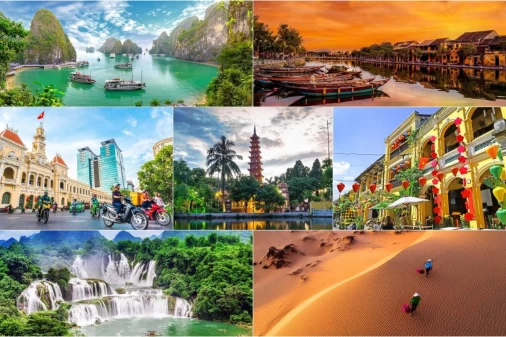
7 days Vietnam itinerary - The Epitome of the finest tours
Sometimes going on short trips can be exciting but also comes with some few challenges like planning...

Vietnam travel tips - The pathway to a perfect trip
Traveling to a new place especially for the first time can be quite demanding, due to human anxiousness...

Is Vietnam safe to travel? An advice to upcoming travelers
It is trite knowledge that Vietnam has some of the most beautiful and breathtaking landscapes as well...
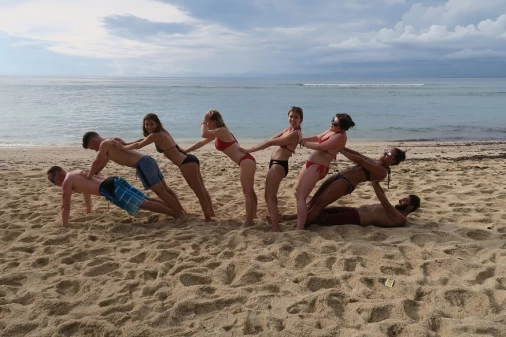
A guide to choose between Private tours and Group tours
It is often a challenge deciding between a private or a group tour, especially for first timers. Some...

Central Vietnam Itinerary - An amazing Guide to the Perfect Tour
Having on standby the right key to navigate through central Vietnam is like a dream come true especially...
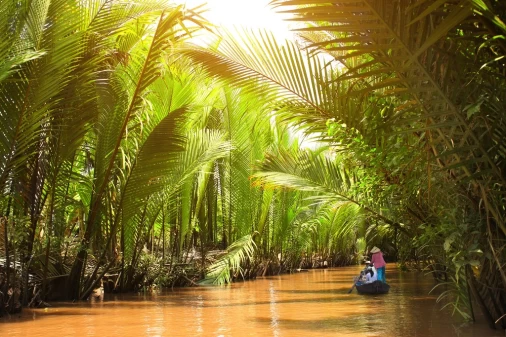
South Vietnam Itinerary- A treat to an impeccable beauty
Explore the Southern part of Vietnam as you treat yourself to the best parts only. Get to experience...

North Vietnam Itinerary - A comprehensive Guide to explore the North
Northern Vietnam is a region of aesthetic sceneries and landscapes with practically fascinating cultures...
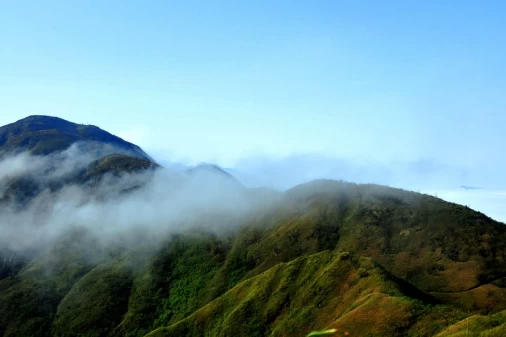
Fansipan Mountain - A solemn structure of Vietnam’s pinnacle
Explore an exciting journey with either a cable car or by hiking as you rise about 3,143 meters above...
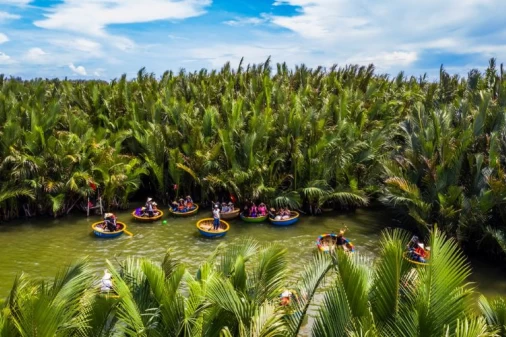
Bay Mau Coconut Forest - A fast rising destination for tourists
Bay Mau coconut forest is a very famous ecotourism site in Hoi An as well as the whole of Vietnam. It...
 France
France  Spain
Spain  German
German  Italian
Italian 

 Vietnam Tours
Vietnam Tours  Cambodia Tours
Cambodia Tours  Myanmar tours
Myanmar tours  Thailand Tours
Thailand Tours  Laos Tours
Laos Tours